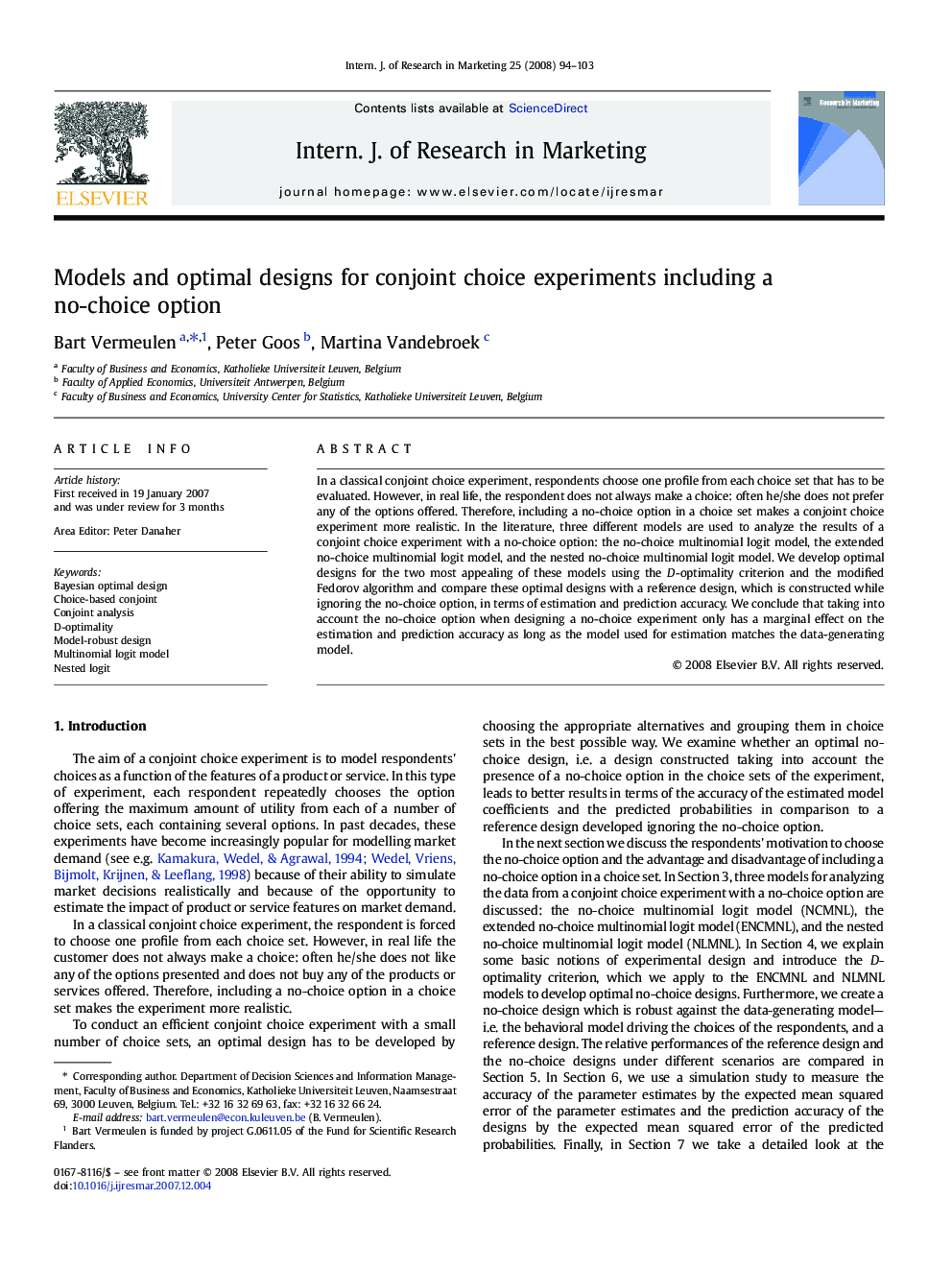| Article ID | Journal | Published Year | Pages | File Type |
|---|---|---|---|---|
| 880486 | International Journal of Research in Marketing | 2008 | 10 Pages |
In a classical conjoint choice experiment, respondents choose one profile from each choice set that has to be evaluated. However, in real life, the respondent does not always make a choice: often he/she does not prefer any of the options offered. Therefore, including a no-choice option in a choice set makes a conjoint choice experiment more realistic. In the literature, three different models are used to analyze the results of a conjoint choice experiment with a no-choice option: the no-choice multinomial logit model, the extended no-choice multinomial logit model, and the nested no-choice multinomial logit model. We develop optimal designs for the two most appealing of these models using the D-optimality criterion and the modified Fedorov algorithm and compare these optimal designs with a reference design, which is constructed while ignoring the no-choice option, in terms of estimation and prediction accuracy. We conclude that taking into account the no-choice option when designing a no-choice experiment only has a marginal effect on the estimation and prediction accuracy as long as the model used for estimation matches the data-generating model.
